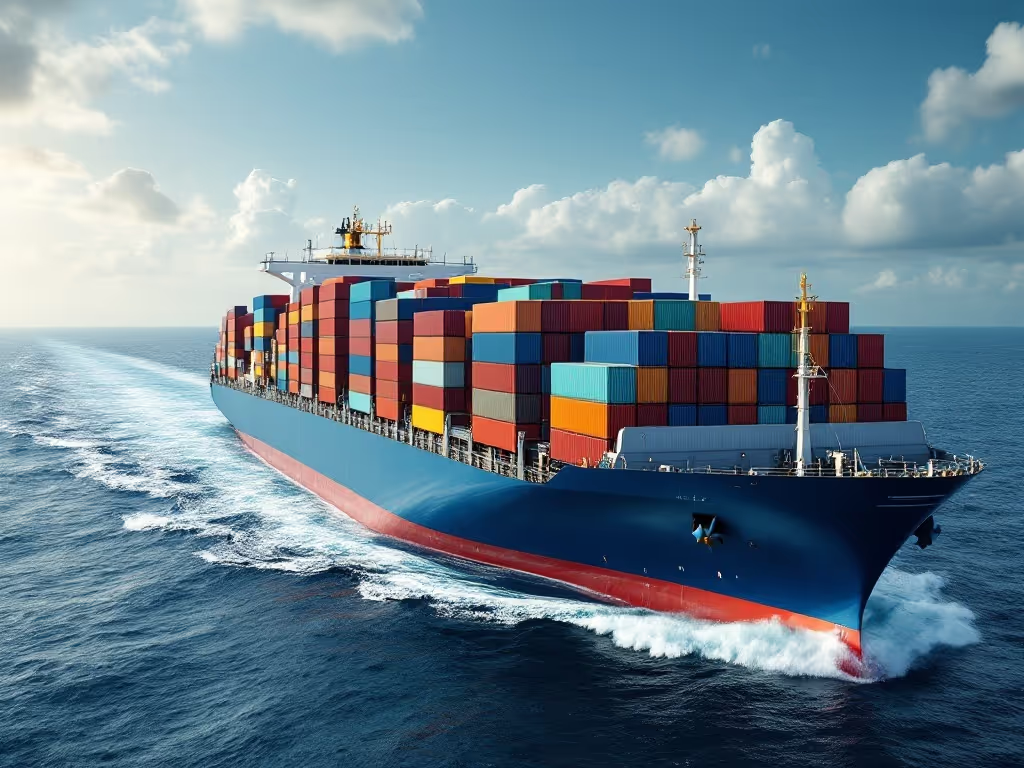
Sea freight, also known as ocean freight, is one of the most common and cost-effective methods of shipping goods across the world. It plays a crucial role in global trade, facilitating the movement of large cargo volumes between countries. With over 90% of the world's goods being transported via sea, this mode of transport is indispensable for international commerce.
Unlike air freight, which is fast but costly, sea freight provides an economical solution for businesses looking to transport bulk cargo efficiently. It is especially beneficial for companies that deal with heavy machinery, raw materials, or consumer goods in large quantities. Despite its slower transit time, sea freight remains a preferred choice for many industries due to its affordability and high capacity.
Understanding how sea freight works can help businesses, importers, and exporters optimise their shipping strategies, reduce costs, and ensure smooth operations. This guide explores the essential aspects of sea freight, from booking shipments to delivery at the final destination, helping you navigate the logistics industry with ease.

Sea freight involves the transportation of goods via cargo ships over oceans and seas. It is typically used for international trade, particularly when shipping large, heavy, or bulky goods that would be too expensive to transport via air freight.
Shippers book their cargo with a sea freight forwarder or directly with a shipping line. A freight forwarder is a logistics expert that manages the shipping process on behalf of the exporter or importer. The booking process includes providing details about the type, quantity, and destination of the cargo, ensuring the right shipping method is selected for efficiency and cost-effectiveness.
Proper packaging is essential to protect goods during transit. Cargo should be packed securely to withstand handling, loading, and transportation stresses. Required documents include:
Before the shipment leaves the port, it must be cleared by customs authorities. This involves submitting the necessary documents and paying any applicable duties or taxes. Customs clearance at the origin country ensures that all legal requirements are met before the cargo is loaded onto the ship, avoiding unnecessary hold-ups.
Once cleared, the goods are loaded onto a container and transported to the port. The container is then loaded onto a cargo ship using specialised cranes and equipment to ensure safe handling. Cargo is stowed securely to minimise movement during transit, reducing the risk of damage.
During transit, the cargo moves across the ocean to its destination. This process can take anywhere from a few days to several weeks, depending on the shipping route and distance. Weather conditions and port congestion can also impact transit times. Shipping companies use tracking systems to monitor cargo movement and provide updates to shippers.
Upon arrival, the cargo undergoes customs clearance at the destination port, ensuring all duties and taxes are paid. The receiving party must submit the necessary documents to the local customs authorities for verification. Efficient customs clearance ensures quick processing and avoids demurrage charges for extended storage at the port.
After clearing customs, the cargo is transported to its final destination via truck or rail, completing the sea freight process. Freight forwarders and logistics providers coordinate inland transportation to ensure timely delivery, allowing businesses to receive their goods efficiently.

How to Choose the Right Sea Freight Option

Selecting the right sea freight option requires careful consideration of various factors to ensure cost efficiency, timely delivery, and cargo safety. Here are key steps to help you make the best choice:
Evaluate the type and volume of goods you need to transport. If you are shipping a large quantity, FCL (Full Container Load) may be more cost-effective. For smaller shipments, LCL (Less than Container Load) allows you to share container space with others, reducing costs.
Sea freight typically takes longer than air freight, with transit times varying based on shipping routes and destinations. If your shipment is time-sensitive, you may need to explore express sea freight services or alternative shipping options.
Obtain quotes from multiple freight forwarders and shipping lines. Factors affecting costs include container size, weight, distance, and additional services like warehousing or insurance. Choose a service that provides the best balance between cost and efficiency.
Different countries have varying customs regulations, duties, and taxes. Ensuring compliance with import/export laws will help you avoid delays, penalties, or confiscated goods.
Shipping via sea involves risks such as weather disruptions, cargo damage, or loss. Purchasing marine cargo insurance provides financial protection in case of unforeseen events.
A reputable freight forwarder simplifies the shipping process by handling documentation, customs clearance, and logistics coordination. Research their track record, customer reviews, and industry experience before making a decision.
By carefully assessing these factors, businesses can optimise their shipping strategy, minimise costs, and ensure smooth international freight operations.
Conclusion
Sea freight is a vital component of global trade, offering an economical way to transport goods over long distances. While it may involve complex procedures, understanding the process, key players, and best practices can help businesses and individuals navigate shipping efficiently.
For businesses, selecting the right sea freight option and working with reliable freight forwarders can streamline operations, reduce costs, and ensure timely delivery. It is essential to stay informed about industry regulations, customs procedures, and potential risks to avoid unexpected delays or penalties.
Despite the challenges, sea freight remains one of the most efficient and scalable transport solutions. By embracing best practices and optimising logistics strategies, companies can maximise the benefits of ocean shipping and maintain a competitive edge in global trade.